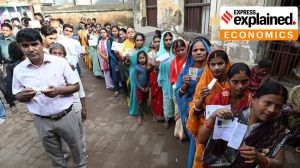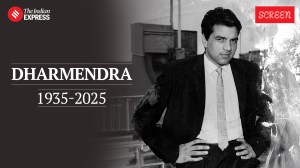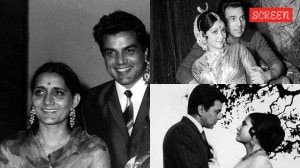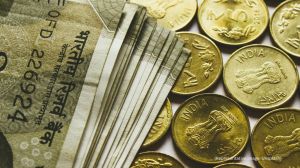A large group of Dhangars recently marched to the office of the subdivisional officer in Khamgaon of Maharashtra’s Buldhana district, demanding a “grazing corridor” for their sheep and goats. Who these herdspeople, and what is meant by a grazing corridor?
The Dhangars are a community of shepherds with populations in several states. Besides Maharashtra, they live in Gujarat, Karnataka, and Andhra Pradesh, as well, and are known by other names such as Golla and Kuruba elsewhere.

The Dhangars are on Maharashtra’s list of Vimukta Jati and Nomadic Tribes (VJNT), but have been demanding Scheduled Tribe (ST) status for decades. According to Dhangar leaders, the community is identified as “Dhangad” elsewhere in the country, and gets reservation as an ST.
Livelihood & culture
According to Sourabh Hatkar, leader of the Mendhpal Putra Army (Army of the Sons of Shepherds), Dhangars have herded their animals along specific routes since time immemorial. In recent decades, however, as the forest department has started marking out protected forests, the movements of the community have come to be seen as encroachment on forest lands.
“The forest department has erected walls along the routes and we are looked at as encroachers. We are slapped with heavy fines and cases are filed against us,” Hatkar said.
According to Hatkar, the community follows the rains, and are normally on the road for the better part of the year. “They take certain routes — in Vidarbha they travel from Buldhana to Amravati to Akola, while some go till Chandrapur. In Western Maharashtra they go till Konkan and come back,” he said.
These routes are both the economic lifeline and a cultural heritage for the community, Hatkar said. “It will not be economically feasible for us to change our grazing routes,” he said.
Story continues below this ad
 NCP Supremo Sharad Pawar with performers from Dhangar community at Bhimthadi Yatra, an annual fair organised at Agricultural College Grounds, Pune. (Express photo by Pavan Khengre)
NCP Supremo Sharad Pawar with performers from Dhangar community at Bhimthadi Yatra, an annual fair organised at Agricultural College Grounds, Pune. (Express photo by Pavan Khengre)
Grazing and forests
The community’s demand for “grazing corridors” is essentially a demand for the recognition of their right to graze along their traditional routes.
Hatkar argued that grazing by small ruminants does not harm the forest. “In fact, small animals such as sheep and goats enrich the land through which they pass. Our livelihood depends on the forest, and there is no question of us causing harming to it,” he said.
“Our people have coexisted with forests for ages; we have passed through these areas repeatedly. Our only demand is that we should be allowed to do so,” Hatkar said.
Story continues below this ad
Caste of Dhangars
The community’s demand for grazing rights is linked to its demand for ST status, which has not made much headway mainly due to opposition from the STs in Maharashtra who fear dilution of their quota benefits if they are shared among a larger population.
The Forest Rights Act, 2006, allows traditional occupations including grazing, but it has helped only STs get access to grazing grounds. Dhangars, who come under the nomadic tribes category, have not benefited.
Community profile
In the absence of a caste-based socio economic survey, the current population of Dhangars is uncertain. The community is believed to be around 1 crore strong, which would make them about 9% of the state’s 11.2 crore population (2011 census).
Around 40% of the Dhangar population is believed to be solely dependent on herding. Hatkar said that while he is studying for a PhD from the University of Edinburgh, his elder brother still migrates with the family’s flocks of sheep and goats. The nomadic life hampers the community’s access to education and healthcare, he said.
Political aspects
Story continues below this ad
The community has a significant presence in Western Maharashtra and in pockets in Vidarbha, and is seen to have the potential to influence election results in four of the state’s 48 Lok Sabha seats, and about 30-35 of the 288 Assembly seats.
Two prominent members of the community, Mahadev Jankar and Gopichand Padalkar, are with the ruling Mahayuti.
Jankar, founder of the Rashtriya Samaj Paksha, which is part of the Mahayuti, is a former Maharashtra minister who lost the Lok Sabha election for the Parbhani seat to the candidate from the Shiv Sena (UBT). Padalkar is a BJP MLC.
Back in 2014, the community had rallied around the demand for inclusion in the ST category, and had backed the BJP-led alliance in the state. As Chief Minister, Devendra Fadnavis had promised a slew of welfare measures for the community.
Story continues below this ad
However, there is currently no political issue that binds the community together, Hatkar said. “Most of them support their local leaders. In 2019 and in 2024 the community did not vote as a united bloc,” he said. Hatkar hopes that with Assembly elections approaching, the demand for grazing corridors would get some traction with political parties.



 NCP Supremo Sharad Pawar with performers from Dhangar community at Bhimthadi Yatra, an annual fair organised at Agricultural College Grounds, Pune. (Express photo by Pavan Khengre)
NCP Supremo Sharad Pawar with performers from Dhangar community at Bhimthadi Yatra, an annual fair organised at Agricultural College Grounds, Pune. (Express photo by Pavan Khengre)




































